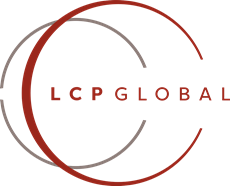Why great people join great companies, then leave.
A lot of people are inspired to join an organization only to be uninspired soon after.
The global research firm Gallup tells us that fifty percent of Americans, at some stage in their career, have left a job just to escape a manager and improve their overall life.
Managers matter.
Another Gallup study reveals management accounts for at least seventy percent of variance in employee engagement scores (employee engagement is the level of enthusiasm and dedication an employee feels toward his or her job). A key factor contributing to employee engagement is the trust and communication between both employees and management and how it contributes to overall performance.[1]
Therefore, it’s hardly surprising that the quality of an organization’s leadership is one of the biggest factors affecting the engagement of its teams. The lack of engagement can have a significant financial impact an organization, too. When employees fail to connect with their leaders this creates an incredibly costly problem to fix.
Numerous studies have quantified the real costs of losing an employee and then having to replace them. Even the most conservative estimates put the bill at 20 to 30 percent of the annual salary of the role affected — and that’s just for junior roles. For more senior, higher paying roles, it can be over double the annual salary to effectively replace someone.
So, what can be done?
Well the good news is, a lot, and there is a specific solution that is surprisingly cost-effective, and time-effective, to implement.
One of the leading problems is that many managers are unaware of how their relationships (or lack of) can impact their staff. What’s more, in many instances these managers are not fully conscious of how the relationships they maintain with their staff are connected to their short-term objectives or even their long-term professional goals.
We transact in relationships every day as a means to achieving our goals. When leaders understand that fostering successful relationships is the key to leveraging their relational currency, they become more aware of the impact they have on others. They can now identify what their desired outcomes could be if they invest in those relationships. By coaching key leadership executives to use their own strengths, and the strengths of those around them, they can build better relationships with the people they lead and break the cycle of great people leaving because of poor leadership.
This singular mindset shift alone can result in profound results for organizations, their leaders and the people who work with them.
Guest blogger: Jeff Miller has worked in numerous CEO and executive roles and shares about the importance of relationships from his leadership experience in this short article. He is currently the CEO of the Civil Contractors Federation of Western Australia.
[1] How to Bring Out the Best in Your People and Company, http://news.gallup.com/businessjournal/228488/bring-best-people-company.aspx. March 6,2018.
Related Content




Comments